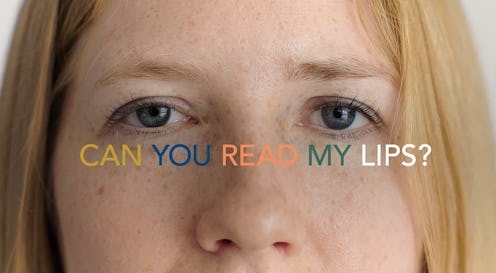Life
This Is What It Really Feels Like To Lip Read

We’re all familiar with that typical Law and Order scenario — the detectives have a blurry video of a conversation and call in an expert to read the lips of the criminals, obtaining key evidence. We assume this is an accurate portrayal of how to lip read. However, the enlightening short film “Can You Read My Lips?” recently released on Vimeo lifts the veil on the difficulties inherent in this form of communication.
The film centers on Rachel Kolb, a Stanford grad, who has been deaf from birth. It is based on her personal essay, “Seeing at the Speed of Sound.” Kolb narrates the video, highlighting the inherent flaws in people’s perception of lip reading. She challenges the assumption that reading faces is a skill in any way similar to “reading a book.” Reading the shapes of a mouth is essentially trying to gain information meant to be received another way. She describes the experience in her essay as, "I am trying to learn something about sound when the eyes were not meant to hear."
Another challenge of lip reading is that many things obstruct the visual cues — from accents, to hand gestures, to speed, and mumbling. Not to mention, the intense concentration that is required in order to follow every word.
Lip reading has been portrayed in movies and TV as a spy-like skill. However, by some approximations, even the most skilled lip readers can only discern 30 percent of what is being said. And as Rachel Kolb states in her essay, when one is functioning at 30 percent it is, "possible to subsist, but difficult to feel at your best and all but impossible to excel."
The video visualizes the difficulties communicating when you live in a world devoid of sound. It highlights how lip reading is far from an exact science, and instead mostly about filling in blanks and guessing. When the sound drops out of the image, one realizes that it is all but impossible to understand what words the mouth is forming. Even when the camera is practically pressed against the person's teeth, one word looks very similar to another. However, while lip reading is difficult, Kolb stresses that when locking onto a face, it creates a unique sense of "human connection."
To challenge perceptions of what it is like to lip read, watch the entire video here:
And to get a further sense of the difficulty inherent in lip reading, watch this humorous short.
Images: Vimeo